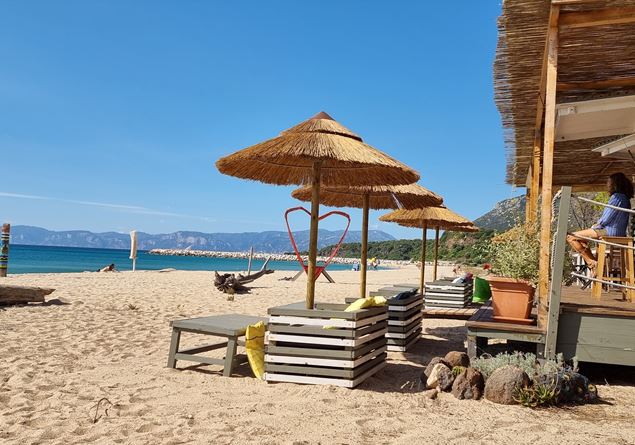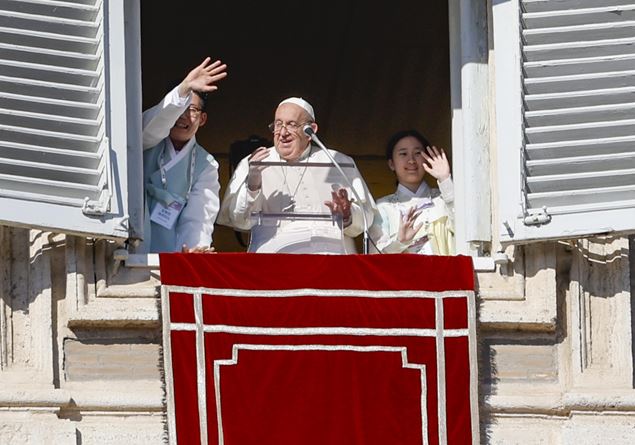
The sanctuary of the Madonna del Rimedio.
by Roberto Di Diodato and Mary Poliafico
If the Costa Smeralda is the most beautiful sea in the world, the Gulf of Orosei is the most beautiful sea in the entire galaxy. The colors that its waters take on are unimaginable. The sands of the beaches are astonishing. The rock walls that sink into the sea are dizzying. The balance between the exploitation of the land and the conservation of the natural environment is miraculous. The gulf goes from the white dunes of Capo Comino to Capo di Monte Santu, from which Arbatax can be discovered on good days. More than one hundred kilometers of coastline where very long beaches unfold and coves and inlets that can only be reached by boat are nestled. In the territory of Baunei: Cala Luna and Cala Goloritzé, the first and the last; in the middle Cala Mariolu, the most admired. In the territory of Dorgali the most famous and visited coastal cave of the entire Gulf: that of the Bue Marino.
The entire stretch of this eastern coast of Sardinia takes its name from Orosei, less than three kilometers from the sea, a city whose orchards of grapes, figs, apricots, watermelons and peaches are flavored by the sea water. And the lands lovingly grow blood-red tomatoes. Mount Tuttavista is a sentinel that watches over the quiet of the houses and courtyards, churches and squares of the town center, in whose shadow ancient religious traditions, historical and artistic memories of subtle beauty are hidden.
There were 29 places of worship, identified by the research of the historian Michele Carta in the volume Sacred Oroseipresent in the Orosei area from the Middle Ages to the eighteenth century. At least fifteen of them have survived the centuries and “still constitute today – says the scholar – one of the main identity assets of the country”. Every temple and every saint has its own celebration. An imaginary procession opens with Saint Anthony the Abbot, who lights the great bonfire on the evening of January 16. Its small and fascinating church, exposed basalt stones and internal walls frescoed with the colors and spirituality of the 14th-15th centuries. Three Confraternities of ancient lay constitution – each with its own white, red or black dress – are dedicated to the care of three “oratories” in the historic center, that of Santa Croce, of the Rosary and of the Souls; their presence enlivens the most heartfelt and participated in celebrations by the community, especially the “mysteries” of Holy Week. On the last Sunday of May, the Madonna leads a spectacular and colorful procession of flower-decorated boats across the Cedrino river to reach her church of Santa Maria del Mare. On July 25th, San Giacomo, on a cart pulled by a pair of oxen, takes possession of Orosei every year as its “master and patron”, walking through the streets accompanied by his people in traditional costumes. Nine days are solemnized by religious celebrations. The popular celebrations last just as long, with singing competitions, dancing in the square, guitar and poetry in the Sardinian language. San Giacomo is the Mother Church, inside which many statues and paintings “saved” from sacred buildings that were destroyed or abandoned have found “maternal” shelter. The eighteenth-century façade is majestic and blindingly white. The two bronze portals made by prestigious artists such as Alfonso Silba and Carmelo Lizzio are modern. Eighteen are the days that the Madonna del Rimedio dedicates in September, starting from the first Friday of the month, to welcome her fellow citizens and the faithful from nearby towns day and night in the “rural” sanctuary. They are hosted in the little houses called cumbessias, arranged all around the little church like a rosary. A very long “family celebration” that seems never-ending, “between the sacred and the profane,” as Grazia Deledda wrote, amidst the joys of wine, sweets and prayers. Soft sunsets at the end of summer. And the nights are riddled with crickets.
The historic centre of the town has been preserved with its cobbled streets, arched underpasses, rural architecture and the charming neighbourhood of old palaceold buildings, now spaces for art exhibitions and cultural events; some of them, however, have been transformed into elegant accommodation facilities. In the heart of the town, set up in a seventeenth-century residence, there is also the delightful Museum of Miniature Theatres, named after Don Giovanni Guiso.
The city grew as the possibilities and enchantments of its sea, the true gold of Orosei, were discovered. Along the coastal strip of the city shores there are only sandy beaches of grainy golden sand as far as the eye can see. One after the other the beaches of Marina, Su Barone, Su Petrosu and Osala are flanked by wide canals that help keep alive some lagoon ponds, ideal habitats for local fauna and for many migratory species. Here the pine forests seem like brush strokes of green drawn to separate the cobalt of the sky from the blue of the sea and to create gentle shadows. Their foliage is the stage for flocks of cicadas that perform in frantic concerts that stun the still summer days. The marine territory of Orosei extends for more than twenty kilometers north along the state road 125, dotted with a necklace of beaches with the fantastic names of Fuile ‘e Mare, Sas Linnas Siccas, Cala Liberotto, Porto Corallo, Cala Ginepro, Sa Mattanosa, Sa Curcurica, until reaching the natural oasis of Biderosa, a cathedral of bliss. To rest from the labors of six days of creation, God came down here and drew with his watercolors five very white beaches of transparent water, crowned by a green forest of junipers, cork oaks, holm oaks and Aleppo pines, framed by reliefs of pink granite and brightened by a blue lake that welcomes passing flamingos in spring. And God saw that everything was very good and beautiful.

The Tenores musical group.
The Monte Urcatu hill is a panoramic point of the reserve from which you can discover a spectacular view of the coast. The internal part of the protected area, crossed by paths and dirt tracks that can be traveled on foot or by bicycle, emanates an unusual suggestion of a mountain environment with the silence and scents of the Mediterranean. Outside the summer season – explains Gavino Meloni, a long-time forest ranger – the Biderosa forest offers the “alternative” tourist mushrooms and asparagus; and then adds that the enchanting park has a little-known history, starting from when a family of shepherds took their flock there to graze. Clear traces of this past occupation remain: an abandoned sheepfold, two wells and caves. A shepherd had planted some lilies, which still continue to grow today as in a spontaneous garden.
An intense and profound bond ties Orosei and its people to the ancient art of traditional Sardinian singing, also experienced as an identity-building cultural heritage, capable of giving ample space to the most sacred, painful and joyful moments that the community experiences. The voices of the “groups” sing in two forms: “a concordu” and “a tenore”: musical universes with different sounds but both of fascinating power. The first was born in an ecclesiastical context to solemnize feasts, funeral rites and liturgical celebrations; these songs are called goose. The second, with a profane theme, is an ancestral song whose origins are lost in the mists of time and it is thought to derive from the singing interpretations of the Tibetan and Mongolian populations. Listening to them is an auditory experience whose shivers remain forever in the soul. In Orosei, singing has never known interruptions. It was and is passed down from the older generations to the younger ones as a precious legacy to be preserved and perpetuated. Currently, there are at least five active groups, particularly lively, often rivals and in competition with each other. Some of them have had important musical collaborations in Italy and abroad. In particular, the group “Concordu e Tenore de Orosei”, recalls Piero Pala, a member of this group, contributed to the creation of the soundtracks of some films by the German director Werner Herzog.
Sometimes in the summer afternoons, in the silence of the courtyards or open churches, the voices of the tenors who try and rehearse their songs. Every now and then, however, it is the vibrations of a launedda or the sounds of a pipiolu to spread arcane melodies that accompany the sunset.







